recently completed: houston’s first baptist church-downtown campus
Though the new downtown campus for Houston’s First Baptist Church started as an outdated union hall, the designers had a mission to transform the eyesore into a vibrant church. The client wanted this campus to stand out visually, describing it early in the design process as ‘a place of light in the city’.
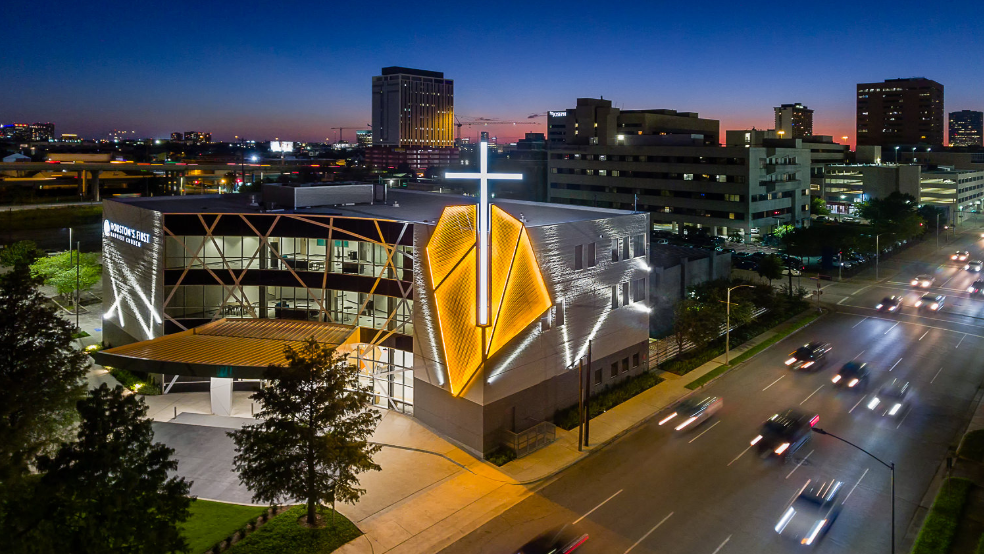
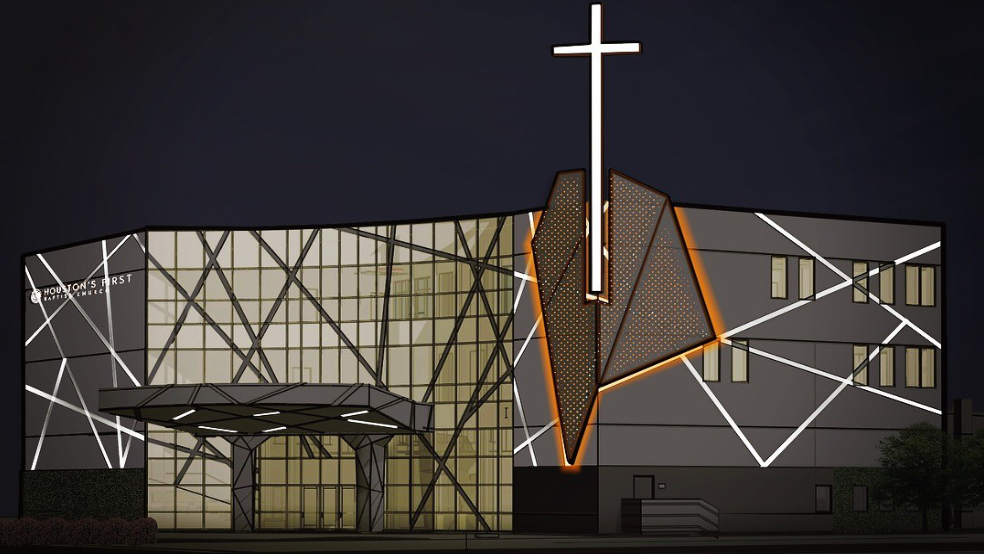
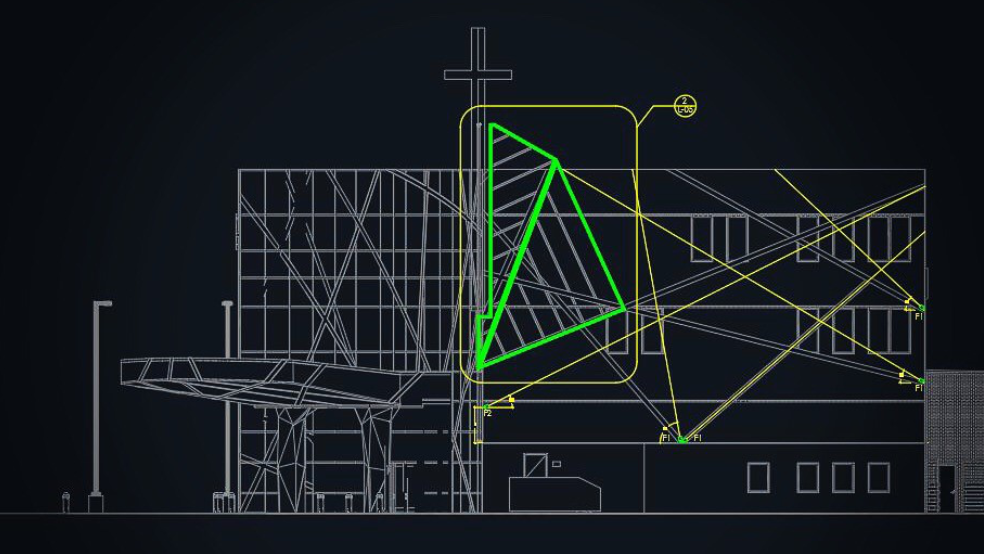
The building is highly visible from two major highways and they wanted to leverage that location with a design that would express the church's values as young and modern. The architect's initial thought was to wash the entire building in light, but that idea blended with surroundings and ultimately looked too commercial. G2LD devised the concept of using lines of light for a graphic design on the façade based on the architect's concept of painted lines intersecting across the building's walls and windows. Visually this was one of the defining characteristics of the building during the day, so the concept also carried into night.
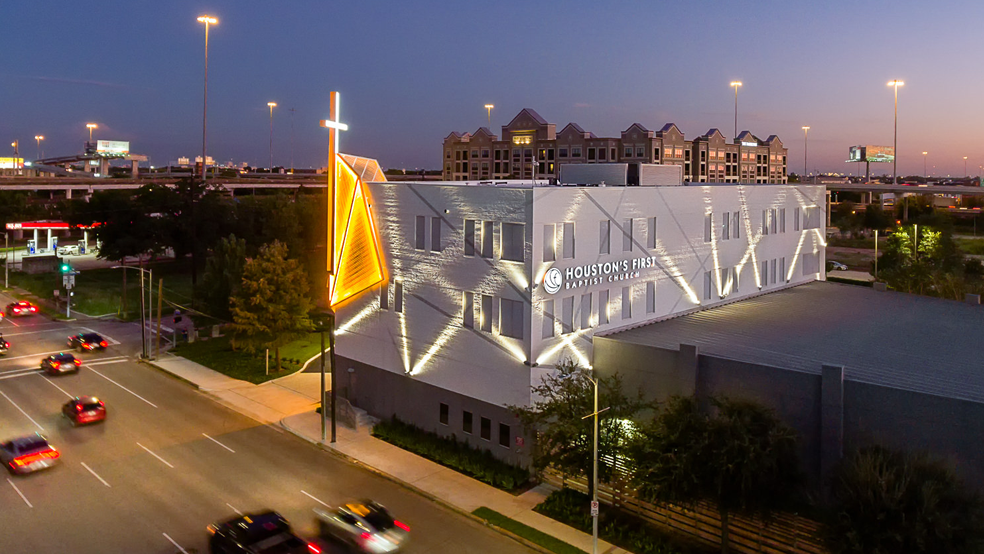
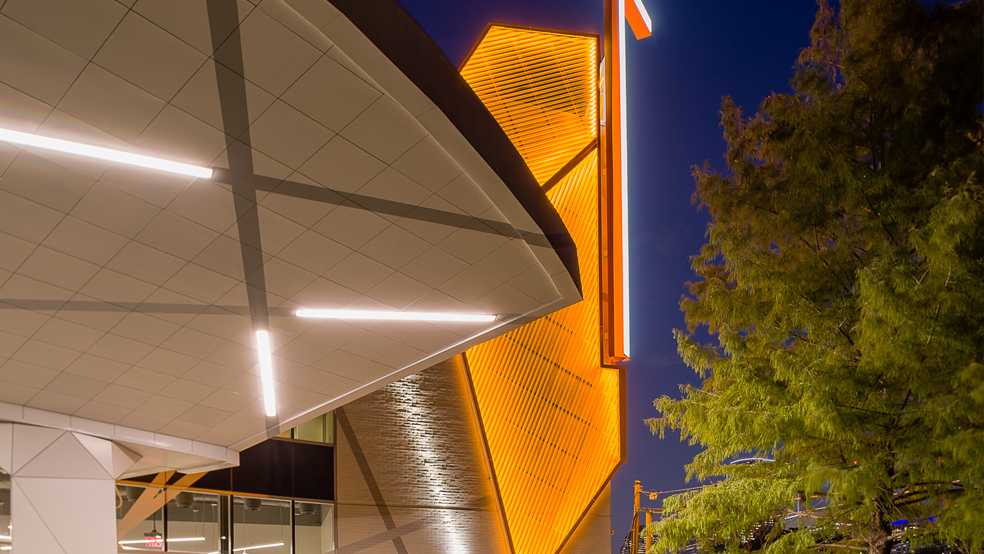
Multi-story lines are created with ultra-narrow-5-degree-beam-spread fixtures. Fixtures were chosen for their tight beam, output, clean look and compact size. With finishes specified to match paint, this allowed the fixtures to blend seamlessly into the façade. Aiming of the fixtures was coordinated so that the lines did not hit the cross structure, signage, or sidewalk, potentially creating glare or hotspots on the ground. Hexcell louvers were used to further tighten the field of beam and minimize light spill. An astronomical timeclock allows lights to operate daily with sunrise and sunset.
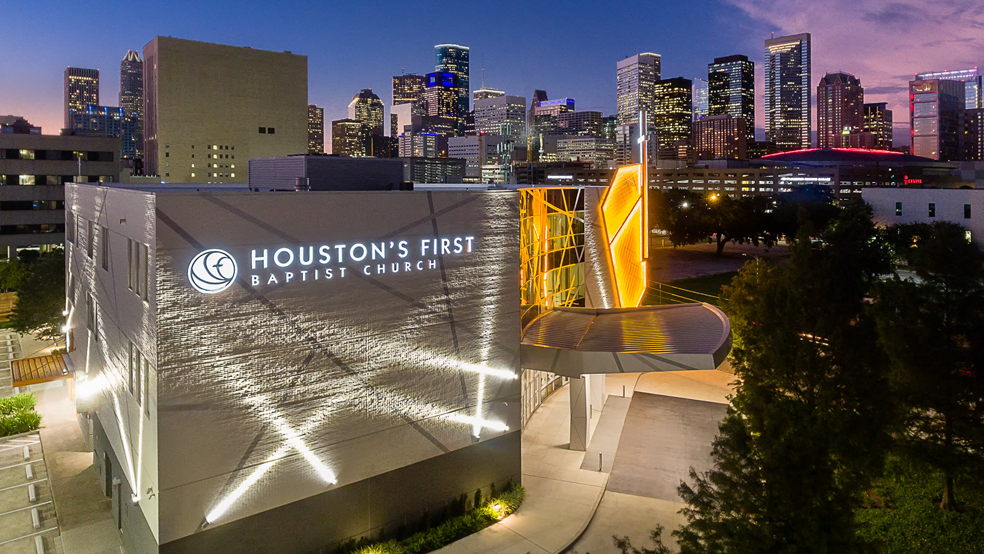
An abstract steel and mesh sculptural piece, which visually supports the illuminated cross is grazed in the same orange color that is used for the signage for visual emphasis. Carefully detailed fixture placement helps highlight the geometric shapes of the piece without drawing attention to the background structure, creating a vibrant focal point.

The innovative approach to façade lighting is not only eye catching from long distances, it is also extremely efficient. The flood light initially proposed by the client would have consumed 3,560w. At only 38w/each, these lines of light consume only 950w total—a win visually and environmentally.
